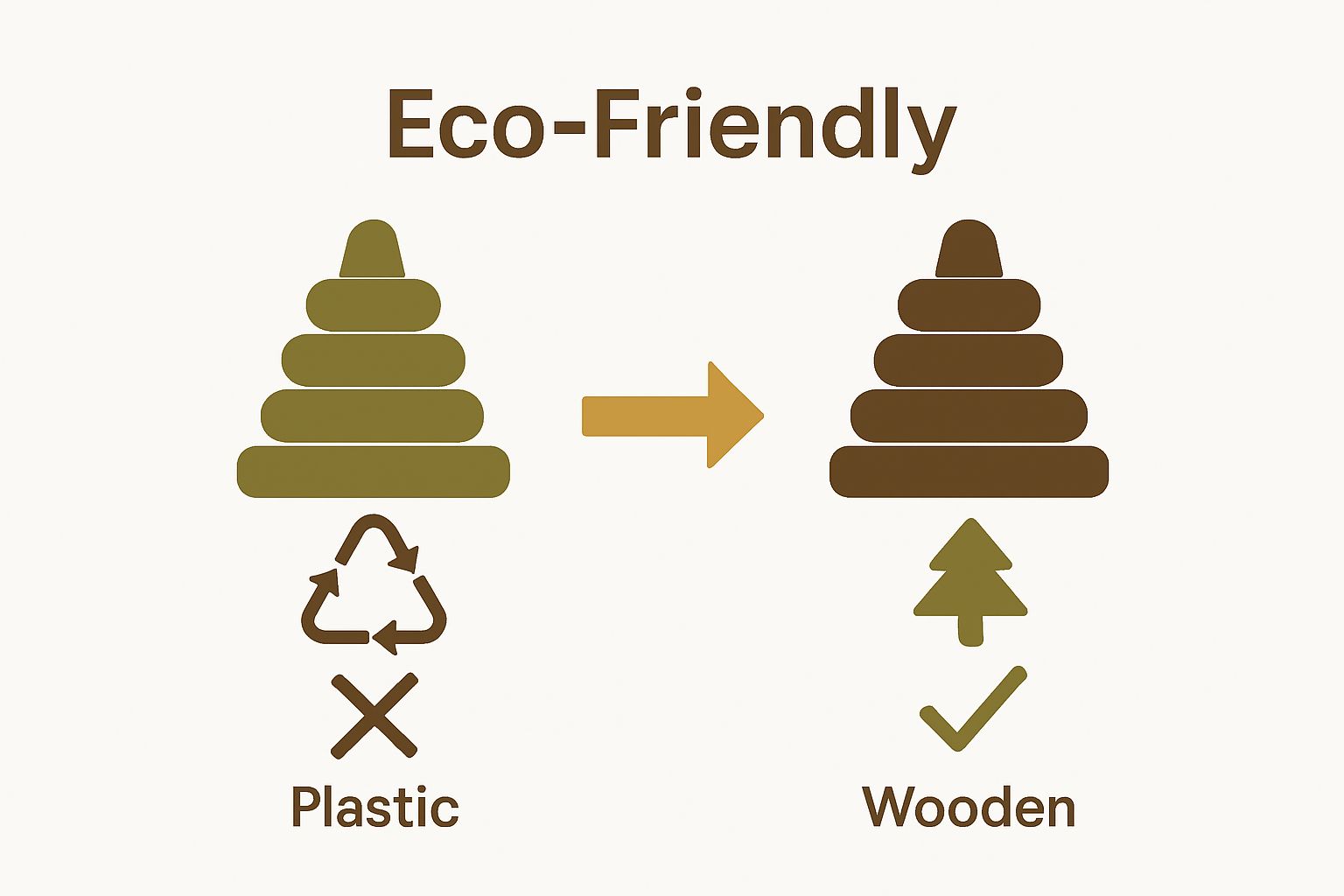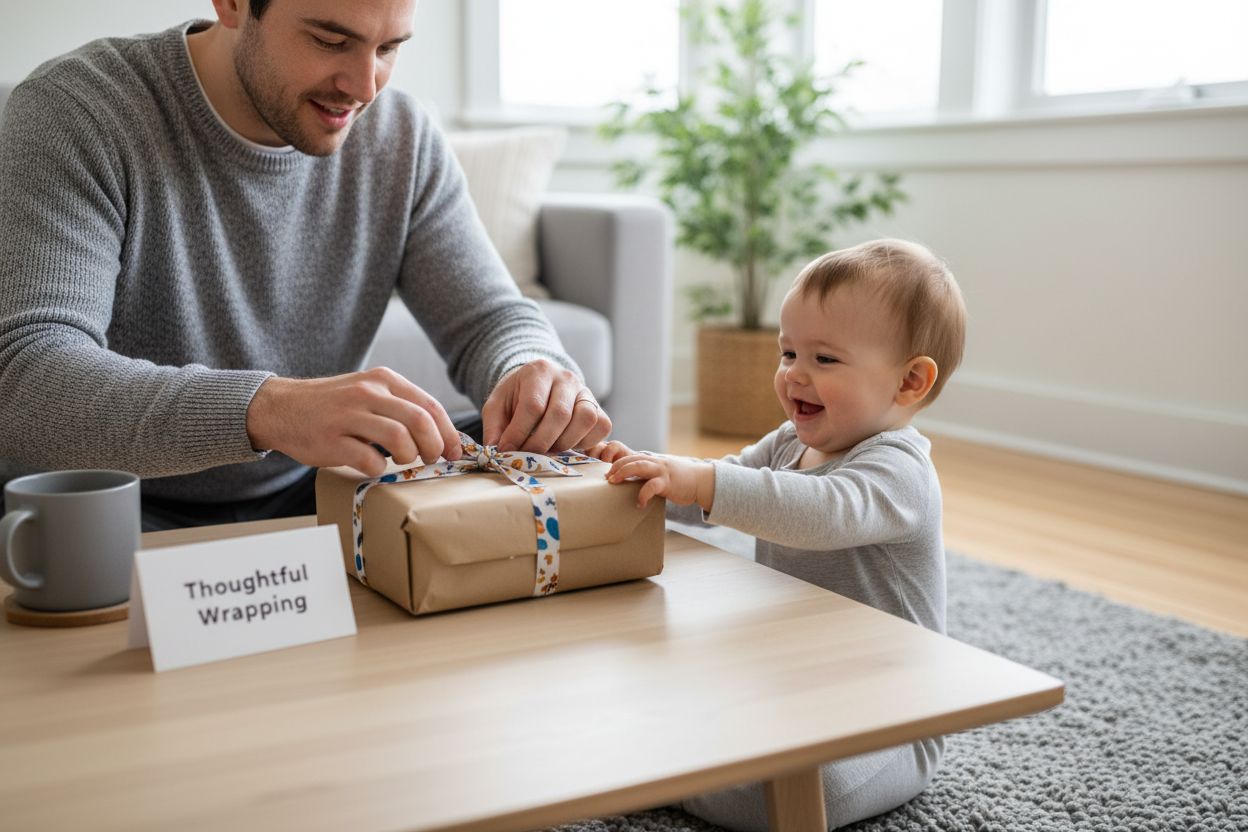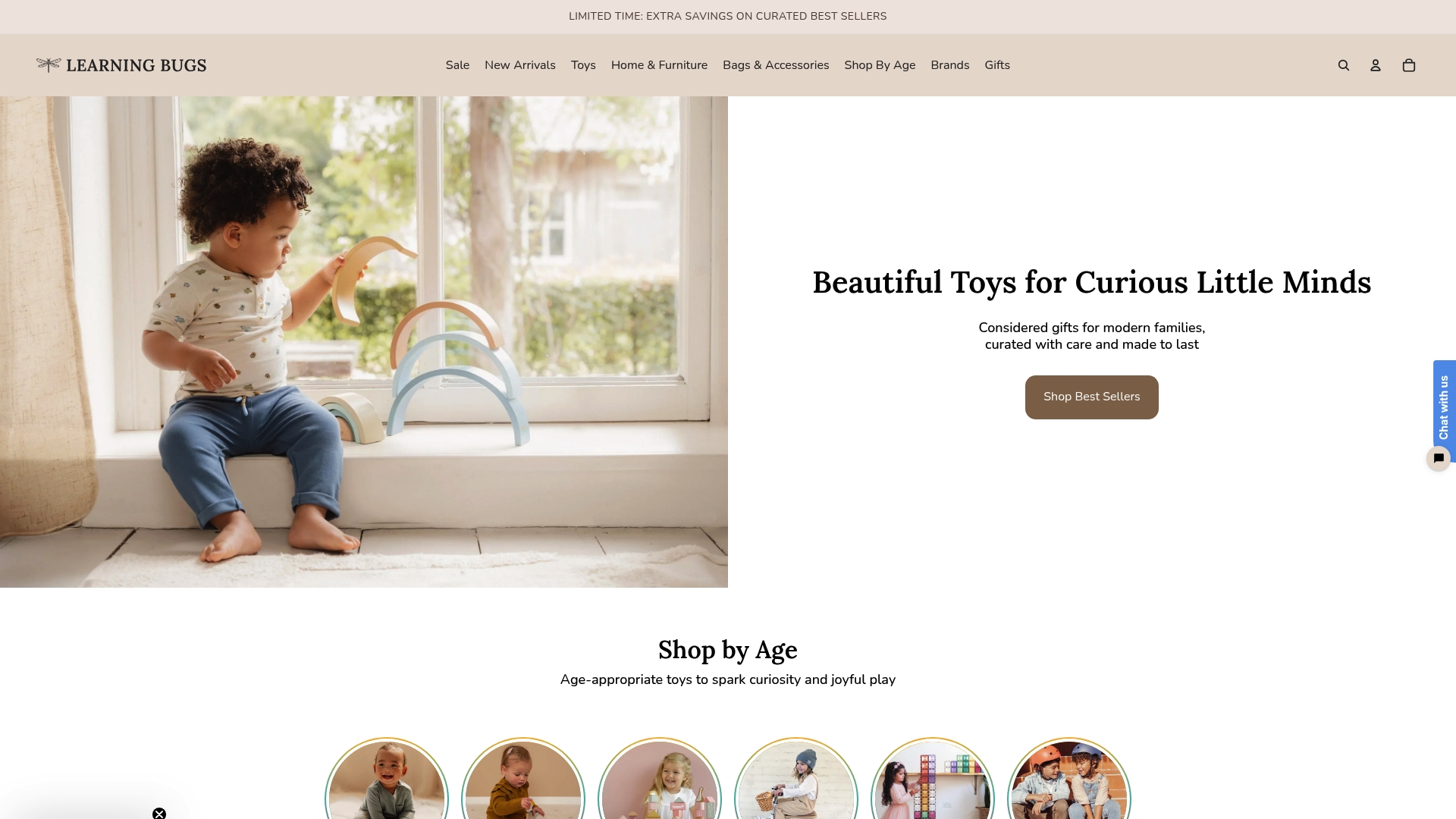Choosing a first birthday toy for your child sounds simple and fun. Every glossy box promises endless learning and delight. But nearly every one-year-old will reach major milestones like crawling, walking, and building basic problem-solving skills during this stage. Some toys truly support those milestones while others gather dust within a week. Picking right can mean the difference between quick boredom and a toy that becomes a cherished daily favourite. Here’s what most parents miss when shopping for that all-important first birthday gift.
Table of Contents
- Step 1: Assess Your Child’s Developmental Stage
- Step 2: Identify Educational and Sensory Toy Options
- Step 3: Select Eco-Friendly and Safe Materials
- Step 4: Compare Prices and Reviews for Quality Assurance
- Step 5: Purchase and Wrap the Chosen Toys Thoughtfully
Quick Summary
| Key Point | Explanation |
|---|---|
| 1. Observe your child’s development | Assess your child’s skills and interests to select toys that engage their growth and abilities appropriately. |
| 2. Choose educational and sensory toys | Select toys that stimulate cognitive and sensory development through interactive and varied experiences without pressure. |
| 3. Prioritise safety and eco-friendliness | Opt for toys made from non-toxic, sustainable materials to ensure your child’s safety and environmental impact. |
| 4. Compare prices and read reviews | Evaluate toys based on quality, durability, and learning value rather than just cost to ensure a worthwhile investment. |
| 5. Wrap gifts thoughtfully for impact | Use sustainable materials and include a note to enhance the gifting experience, making it memorable and meaningful. |
Step 1: Assess Your Child’s Developmental Stage
Picking the perfect first birthday toy requires more than just grabbing the most colourful option from the shop shelf. Understanding your child’s unique developmental stage is crucial for selecting a toy that will genuinely spark joy and support their growth. At around 12 months, children are experiencing remarkable developmental milestones that can guide your toy selection process.
First, observe your child’s current capabilities carefully. Cognitive development at this stage involves basic problem-solving, emerging language skills, and increasing motor coordination. Pay attention to how they interact with existing toys, move around their environment, and respond to different sensory stimuli. Some children might be crawling enthusiastically, while others are taking their first tentative steps. These observations will help you choose toys that challenge and engage them appropriately.
Explore our guide on understanding why educational toys matter to gain deeper insights into selecting age-appropriate playthings. Your goal is to choose toys that provide just the right level of challenge without causing frustration.
Key developmental areas to consider include fine motor skills, gross motor skills, cognitive processing, and social interaction. A well-chosen toy can support multiple developmental domains simultaneously. For instance, a simple stacking toy can help improve hand-eye coordination, teach basic spatial relationships, and encourage problem-solving skills. Look for toys that encourage exploration, have multiple ways of interaction, and can grow with your child’s emerging abilities.
Remember that every child develops differently. Trust your parental instincts and be prepared to adapt your toy selection based on your child’s unique personality and interests. Some children might show more interest in manipulative toys that require precise movements, while others might prefer toys that encourage crawling, walking, or imaginative play.
Successful toy selection means observing your child’s reaction and engagement. A perfect toy will capture their attention, invite repeated interaction, and provide a sense of accomplishment when they master its use. Watch for signs of sustained interest, problem-solving attempts, and genuine excitement as indicators that you’ve selected a developmentally appropriate and engaging toy for your one-year-old.
Step 2: Identify Educational and Sensory Toy Options
Navigating the world of educational and sensory toys for your first birthday celebration requires a thoughtful approach that balances learning with pure enjoyment. Educational toys are not about academic pressure, but creating engaging experiences that naturally stimulate cognitive and sensory development. Your primary goal is to select playthings that transform learning into an exciting, interactive adventure.
Start by understanding the key sensory domains. At one year old, children are extremely receptive to tactile, visual, and auditory stimulation. Look for toys that offer varied textures, gentle sounds, and bright yet not overstimulating colours. Wooden blocks with different surfaces, soft musical instruments, and interactive books with touch-and-feel elements can provide rich sensory exploration opportunities.
Read our comprehensive guide to fine motor skills toys to understand how specific toys can support your child’s developmental journey. Prioritise toys that encourage manipulation, stacking, sorting, and simple problem-solving. Toys that require precise hand movements will help develop fine motor skills while keeping your child thoroughly entertained.
Multipurpose toys are golden. Search for items that can be used in multiple ways, growing alongside your child’s expanding capabilities. A set of nesting cups, for instance, can be used for stacking, sorting by colour, learning volume concepts, and even water play. These versatile toys provide excellent value and continuous learning opportunities.
Consider the sensory input each toy provides. Some children are more sensitive to certain textures or sounds, so observe your child’s reactions carefully. Introduce toys gradually, watching for signs of engagement or potential overstimulation. A toy that creates gentle, predictable sounds might fascinate one child while overwhelming another.
Below is a table summarising the main types of educational and sensory toys mentioned, along with their benefits and key sensory features.
| Toy Type | Developmental Benefits | Sensory Features |
|---|---|---|
| Wooden blocks | Fine motor skills, problem-solving, hand-eye coordination | Varied textures, tactile engagement |
| Musical instruments | Auditory development, coordination, cause and effect | Gentle sounds, interactive |
| Interactive books | Emerging language skills, cognitive development | Touch-and-feel elements, visual |
| Stacking/Nesting cups | Motor skills, spatial awareness, problem-solving | Bright colours, water play options |
| Sorting toys | Recognition, logic, motor skills | Varied shapes, tactile sensations |
| Soft toys (varied texture) | Sensory exploration, comfort | Different surfaces, tactile input |
Verify your toy selection’s effectiveness by monitoring your child’s interaction. A perfect educational toy will hold their attention, invite repeated exploration, and visibly challenge their developing skills.
Look for moments of concentration, repeated attempts to interact with the toy, and the delightful sparkle of discovery in their eyes. These are clear indicators that you’ve selected a toy that truly supports their learning and play.
Step 3: Select Eco-Friendly and Safe Materials
Choosing toys with eco-friendly and safe materials goes beyond environmental consciousness; it directly impacts your child’s health and developmental experience. Young children explore the world primarily through touch and often put toys in their mouths, making material selection a critical aspect of responsible toy purchasing.
Start by examining toy materials closely. Natural materials like sustainably sourced wood, organic cotton, and natural rubber offer excellent alternatives to plastic. These materials are not only safer for your child but also more environmentally responsible. Wooden toys, in particular, provide a tactile warmth and durability that synthetic materials cannot match. Look for toys crafted from untreated, non-toxic wood with smooth edges and natural finishes that eliminate potential chemical risks.
Discover our curated collection of educational wooden toys that combine safety with engaging play experiences. When evaluating toy materials, consider more than just aesthetic appeal. Check for certifications indicating non-toxic manufacturing processes, absence of harmful chemicals like BPA, phthalates, and lead, and sustainable production methods.
Safety extends beyond material composition to include structural integrity. Inspect toys for potential hazards such as small detachable parts, sharp edges, or weak connections that could break during enthusiastic play. One-year-olds are notorious for their robust handling of toys, so durability matters as much as initial safety. Choose toys with robust construction that can withstand repeated use and occasional enthusiastic throwing.
Consider the long-term environmental impact of your toy selection. Toys made from renewable materials that are biodegradable or easily recyclable represent a responsible choice. Wooden toys, for instance, can often be passed down through generations, reducing waste and providing a sustainable play option. Some families even refinish or repurpose wooden toys, extending their lifecycle and creating meaningful heirlooms.
Verify your eco-friendly and safe toy selection by conducting a simple assessment. Check for smooth surfaces without splinters, robust construction, and clear age-appropriate markings.
This checklist table helps you quickly verify toy safety, eco-friendliness, and suitability based on the article’s recommendations.
| Verification Step | What to Check For | Why It Matters |
|---|---|---|
| Material safety | Non-toxic, no BPA, phthalates, or lead | Prevents chemical exposure |
| Sustainable, eco-friendly composition | Wood from sustainable sources, organic cotton | Reduces environmental impact |
| Structural integrity | Robust construction, no sharp edges, no small parts | Ensures safe, durable play |
| Age-appropriate markings | Clearly labelled for suitable age | Matches developmental stage |
| Surface check | Smooth, splinter-free finishes | Avoids skin injuries and choking |
| Durability | Withstands enthusiastic play and throwing | Prolongs toy lifespan |
| Certifications | Third-party safety/eco certifications (if available) | Adds assurance about safety claims |

Step 4: Compare Prices and Reviews for Quality Assurance
Navigating the landscape of first birthday toys requires more than just identifying the right developmental options; it demands a strategic approach to evaluating quality, value, and authentic user experiences. Price comparison is not about finding the cheapest option, but discovering the most worthwhile investment in your child’s play and learning journey.
Begin by establishing a realistic budget range that reflects the toy’s potential longevity and educational value. Resist the temptation to overspend on flashy items that might capture momentary attention. Instead, focus on toys with demonstrated versatility and durability. Consider how a toy might adapt to your child’s growing skills over the next six to twelve months, effectively extending its educational and entertainment potential.
Learn more about our curated selection of best toys to understand how professional curation can guide your selection process. When comparing prices, look beyond the initial cost and evaluate the toy’s overall value proposition. A slightly more expensive wooden toy that will survive multiple children’s play might represent better long-term value than a cheaper plastic alternative that breaks quickly.
Consumer reviews are your secret weapon in quality assurance. Look for detailed reviews that discuss not just the toy’s immediate appeal, but its durability, educational merit, and ability to engage children. Pay special attention to reviews from parents of children in the same developmental stage. These insights can reveal potential issues with construction, age-appropriateness, or unexpected play patterns that marketing materials might not highlight.
Develop a systematic approach to review analysis. Look for consistent themes across multiple reviews rather than being swayed by a single extremely positive or negative opinion. Consider the credibility of the reviewer, checking whether their description of the toy’s features and performance seems genuine and detailed. Watch for reviews that discuss how the toy supported specific developmental skills or maintained a child’s interest over time.
Verify your selection by cross-referencing multiple sources of information. A high-quality first birthday toy will have consistent positive feedback, clear safety credentials, and demonstrate tangible developmental benefits. Trust your parental instincts, but also rely on the collective wisdom of experienced parents and educational experts. The perfect toy is not just about price or popularity, but about creating a meaningful, engaging play experience that supports your child’s growth and curiosity.
Step 5: Purchase and Wrap the Chosen Toys Thoughtfully
The final step of selecting first birthday toys transforms your thoughtful research into a memorable gifting experience. Purchasing is more than a transaction; it’s an opportunity to create lasting memories and demonstrate your understanding of the child’s developmental journey. Approach this stage with the same intentionality you’ve applied throughout your toy selection process.
When making your purchase, prioritise trusted retailers that offer clear return policies and genuine product descriptions. Online shopping provides convenience, but physical stores allow you to examine toy quality firsthand. If purchasing online, carefully review shipping times to ensure the toy arrives before the birthday celebration. Check for additional protective packaging that maintains the toy’s integrity during transit.
Explore our guide on creative toy gifting strategies to enhance your presentation approach. Wrapping becomes an extension of your gift’s thoughtfulness. Choose sustainable wrapping materials like recycled paper or reusable fabric wraps that align with the eco-friendly ethos of your selected toys. Avoid excessive plastic packaging that could create unnecessary waste.
Presentation matters as much as the gift itself. Consider creating a small accompanying card explaining why you selected this particular toy, highlighting its developmental benefits. This personal touch transforms the gift from a simple object into a meaningful experience. For one-year-olds, the wrapping can be part of the excitement too - bright colours, interesting textures, and gentle sounds can make the unwrapping process an engaging sensory experience.
Be mindful of potential safety considerations during the unwrapping process. Remove any small tags, staples, or tight plastic wrappings before presenting the toy to the child. If the toy requires initial assembly, do this beforehand to ensure immediate play-readiness. Check that all components are securely attached and that no sharp edges or loose parts could pose a risk.
Verify the success of your gift selection by observing the child’s initial interaction. A perfect first birthday toy will capture immediate attention, invite exploration, and spark genuine curiosity. Look for signs of engagement: sustained focus, attempts to manipulate the toy, and the delightful sparkle of discovery in their eyes. Remember, the most valuable gift is not just the toy itself, but the learning experience and joy it represents.

Discover Joyful First Birthday Gifts with Learning Bugs
You want your child’s first birthday to be filled with delight and meaningful growth, but choosing the perfect toy can feel overwhelming. With so many options, how can you be sure your gift truly matches your child’s unique stage while also guaranteeing safety and educational value? Parents reading our guide care about developmental milestones, eco-friendly materials, and toys that inspire creativity and exploration.

Let Learning Bugs help you create magical moments that last beyond the birthday. Our curated collection of timeless wooden toys and play essentials balances sensory stimulation with safe, sustainable choices. Each product is carefully chosen to align with your child’s needs and your values, supporting every aspect of early learning. If you want to learn more about what makes educational toys so special, we invite you to explore our in-depth guide and discover joyful gifts that nurture real development.
Act now for a shopping experience that takes the guesswork out of gifting. Visit Learning Bugs and find that perfect first birthday treasure today.
Frequently Asked Questions
How do I assess my child’s developmental stage when choosing a first birthday toy?
To assess your child’s developmental stage, observe their physical movement, interaction with current toys, and responses to sensory stimuli. Pay attention to their gross motor skills, fine motor skills, and cognitive abilities to select toys that appropriately engage and challenge them.
What types of educational toys should I consider for my child’s first birthday?
Consider toys that encourage exploration, manipulation, and problem-solving. Look for options like stacking toys, interactive books, or musical instruments that promote sensory development and fine motor skills while also being fun and engaging.
What materials should I choose for my child’s first birthday toys for safety and sustainability?
Select toys made from eco-friendly materials like sustainably sourced wood or organic cotton, as these are safer for your child and the environment. Ensure the toys are free from harmful chemicals and that they have been tested for safety to minimise risks during play.
How can I ensure I am getting good quality toys for my child’s first birthday?
Research consumer reviews and compare several options to gauge quality before purchasing. Look for consistent feedback on durability and educational value from other parents to ensure the toy will withstand active play and provide long-term engagement.
What wrapping options can I use to make the gift more meaningful?
Use sustainable wrapping materials such as recycled paper or fabric wraps to align with eco-friendly values. Consider including a card that explains the toy’s developmental benefits, adding a personal touch that enriches the gifting experience.
How should I gauge my child’s engagement with their new birthday toys?
Observe your child during their initial playtime with the toys, looking for signs of sustained interest and exploration. A good indicator of engagement is when they repeatedly interact with the toy or show excitement in discovering how it works.

0 comments